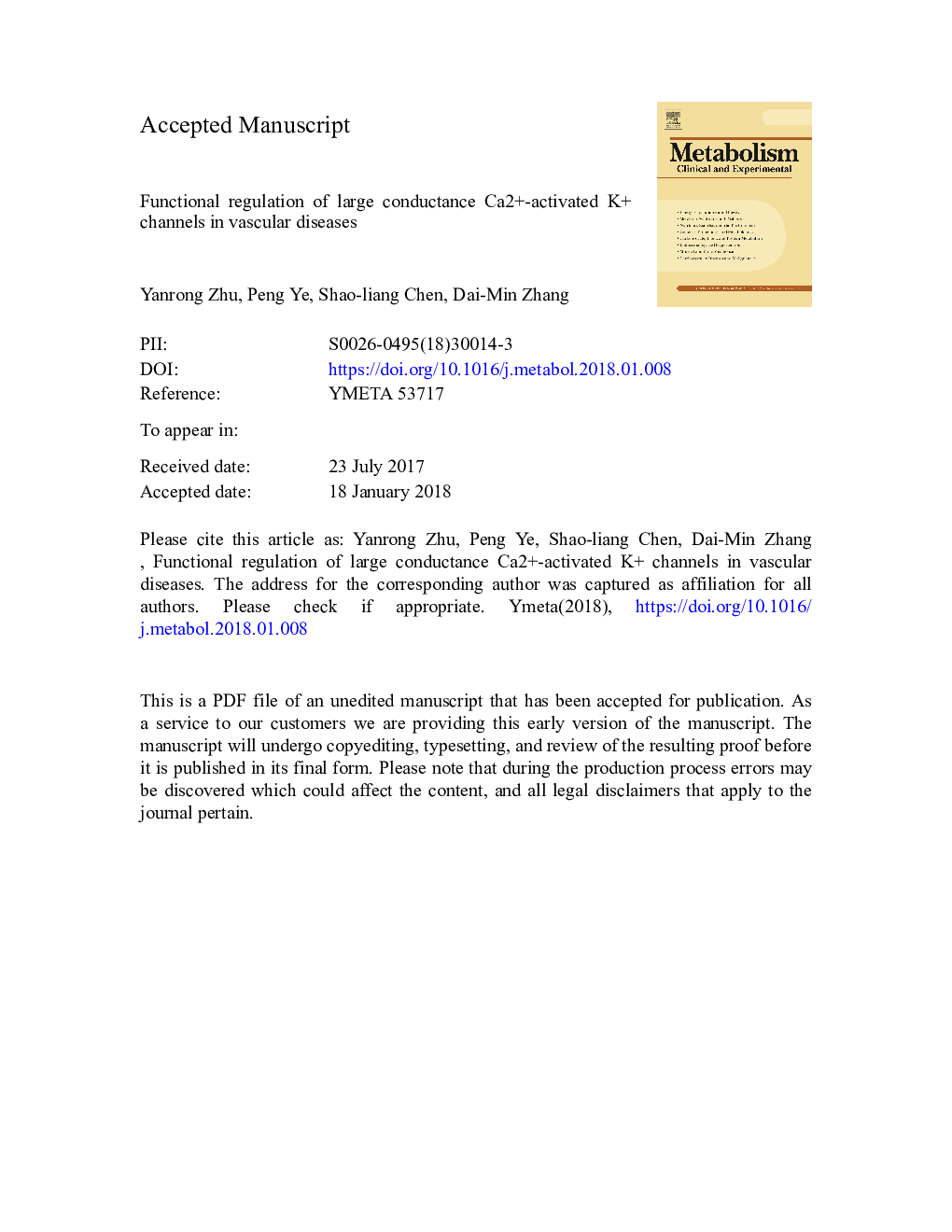| Article ID | Journal | Published Year | Pages | File Type |
|---|---|---|---|---|
| 8632962 | Metabolism | 2018 | 25 Pages |
Abstract
The large conductance Ca2+-activated potassium channels, the BK channels, is widely expressed in various tissues and activated in a Ca2+- and voltage-dependent manner. The activation of BK channels hyperpolarizes vascular smooth muscle cell membrane potential, resulting in vasodilation. Under pathophysiological conditions, such as diabetes mellitus and hypertension, impaired BK channel function exacerbates vascular vasodilation and leads to organ ischemia. The vascular BK channel is composed of 4 pore-forming subunits, BK-α together with 4 auxiliary subunits: β1 subunits (BK-β1) or γ1 subunits (BK-γ1). Recent studies have shown that down-regulation of the BK β1 subunit in diabetes mellitus induced vascular dysfunction; however, the molecular mechanism of these vascular diseases is not well understood. In this review, we summarize the potential mechanisms regarding BK channelopathy and the potential therapeutic targets of BK channels for vascular diseases.
Keywords
β-SubunitMURFAT1RIbTXiberiotoxinWKYVSMCNrf2VSDT2DMnuclear factor erythroid-2-related factor 2VDCCSpontaneous transient outward currentSMCSTOCNF-κBI/RO2−Hydrogen peroxidesuperoxide anionArachidonic aciddocosahexaenoic acidischemia/reperfusionSpontaneously Hypertensive RatVoltage sensor domainDHADiabetes mellitusType 2 diabetes mellitusSmooth muscle cellVascular smooth muscle cellSmooth muscle cellsMetabolic syndromeShrHeart ratenuclear factor-κBmean arterial blood pressureMETSCANmapNitric oxideH2O2Wistar-KyotoBK channelVoltage-dependent Ca2+ channelBK channelsCalcineurin
Related Topics
Life Sciences
Biochemistry, Genetics and Molecular Biology
Endocrinology
Authors
Yanrong Zhu, Peng Ye, Shao-liang Chen, Dai-Min Zhang,
